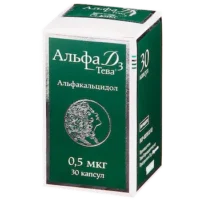Description
Hydrogen Peroxide Solution 3% 100 ml
Ingredients:
Hydrogen peroxide solution 3% (w/v) is the active ingredient in this product. It also contains purified water as an inactive ingredient.
Mechanism of Action:
Hydrogen peroxide acts as a mild antiseptic by releasing oxygen when applied to the skin, which helps to kill bacteria and prevent infection. Its antimicrobial properties make it effective in wound care.
Pharmacological Properties:
Hydrogen peroxide solution 3% exhibits antiseptic properties that aid in preventing infections in minor cuts, scrapes, and burns. It functions by releasing oxygen to eliminate bacteria on the skin surface.
Indications for Use:
Hydrogen peroxide solution 3% is indicated for use as an antiseptic to prevent infection in minor cuts, scrapes, and burns. Additionally, it can serve as a mouthwash to alleviate minor mouth irritations.
Contraindications:
Avoid applying hydrogen peroxide solution 3% on deep wounds, animal bites, or severe burns without professional medical advice. Refrain from using if allergic to any of the components present in the solution.
Side Effects:
Common side effects may include skin irritation or allergic reactions. Discontinue use and seek medical attention if any adverse reactions occur.
Usage Instructions:
For external use only. Clean the affected area before applying the solution using a cotton ball. Refrain from ingestion or injection of the solution. Follow healthcare provider’s directions for application frequency.
Benefits Compared to Analogues:
Hydrogen peroxide solution 3% offers superior antiseptic properties compared to traditional saline solutions, effectively reducing the risk of infection in minor wounds. Its bubbling action aids in wound cleansing and promotes faster healing.
Suitable Patient Groups:
This product is suitable for use by adults, children, and the elderly under appropriate medical guidance. Adjust dosage and application as necessary based on individual needs.
Storage and Shelf Life:
Store hydrogen peroxide solution 3% in a cool, dark place away from direct sunlight. Ensure it is inaccessible to children. Adhere to the expiration date indicated on the packaging for optimal efficacy.
Packaging Description:
The product is packaged in a 100 ml container of hydrogen peroxide solution 3%, clearly labeled with usage instructions and safety precautions.
Scientific Evidence:
Clinical studies have demonstrated the efficacy of hydrogen peroxide solution 3% in preventing infections in minor wounds. Research has also supported its benefits in oral health when used as a mouthwash.





